The Rise of Low-Code and No-Code: How Anyone Can Build Software Without Coding
Date
Sep 13, 25
Reading Time
7 Minutes
Category
Low-Code/No-Code Development
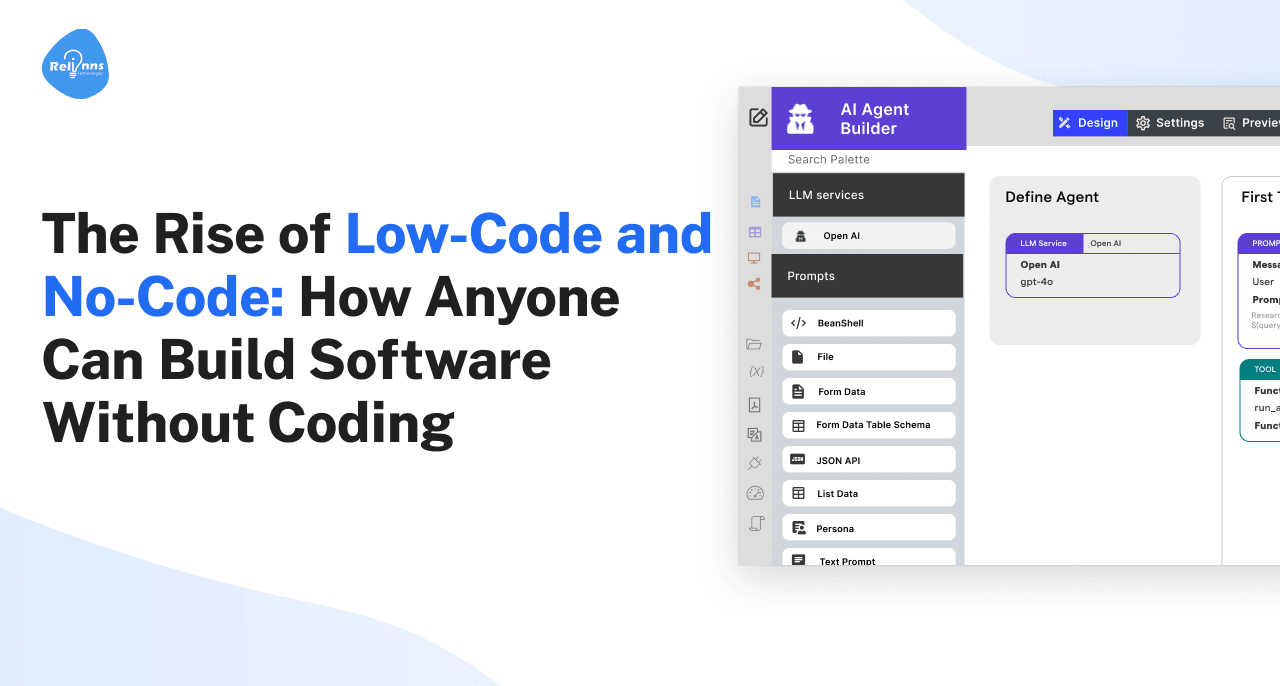
Technology used to be the domain of specialists. If you wanted an application, website, or piece of software to help automate your work, you needed a developer, or even a whole team of developers.
That is changing. In recent years, the rise of low-code and no-code platforms has enabled non-technical individuals to create their own solutions. The distance between "idea" and "execution" has never been smaller.
What exactly are Low-Code and No-Code?
No-code and low-code platforms? They are, in effect, the equivalent of using Lego blocks to build apps instead of writing down every single instruction. You’re moving things around and having them click together, forgetting all about endless lines of code.
It’s much more like you’re playing around with a flowchart than diving into the bowels of some programmer’s command-line wet dream.
You just hook up your data, fiddle with the logic, drop in some buttons or whatever, and boom, the app’s up and running.
Coding purists might side-eye it, but hey, it gets the job done.
- Platforms with no code are intended for complete novices. They typically emphasise simplicity and require no prior knowledge of coding. Wix for websites and Airtable for database management are two well-known examples.
- Low-code platforms are a little more advanced. Code snippets can be used to change pre-built components, even though they come with them. Professionals who want speed without giving up flexibility should use them.
Both tactics significantly accelerate development. Today, something that used to require months of coding can be prototyped in a matter of days, and occasionally even hours.
Why are businesses embracing the Low-Code Movement?
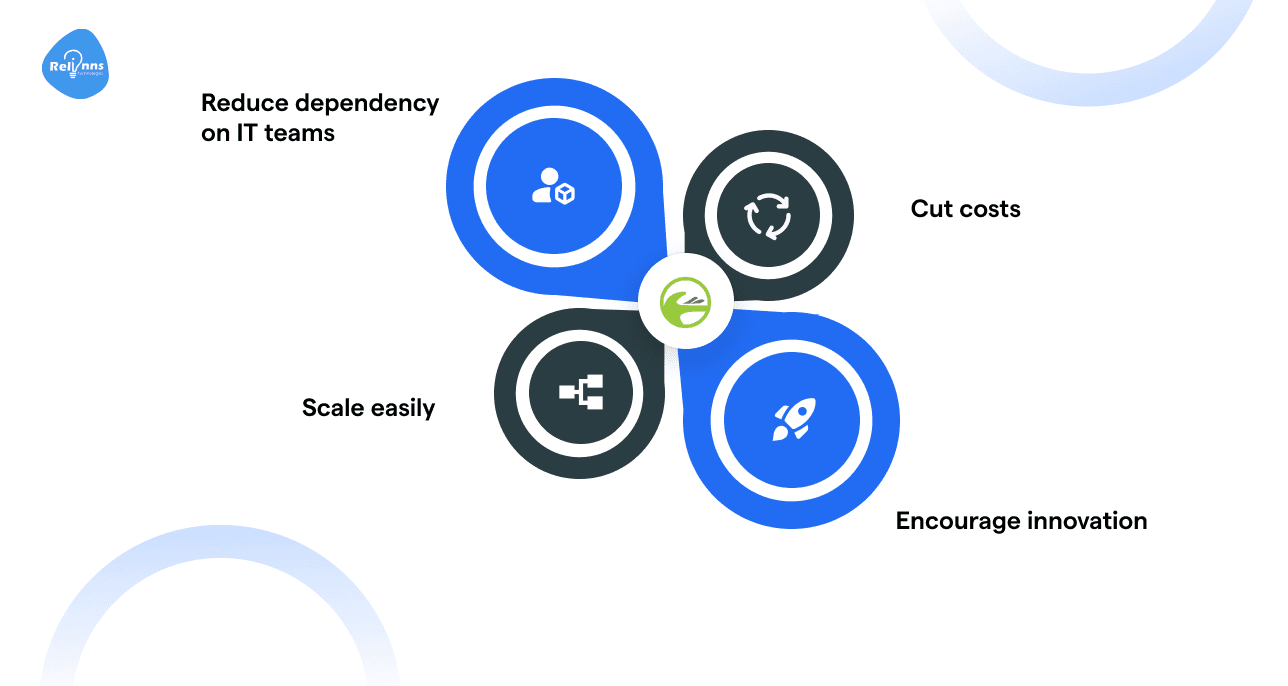
Honestly, you can’t scroll LinkedIn without hearing about digital transformation these days. It’s everywhere. Businesses-big, small, you name it-are scrambling to keep up, move faster, and not tick off their customers. Platforms with little or no code are appealing because they:
- Reduce dependency on IT teams. Instead of waiting for developers to clear backlogs, employees can resolve more minor problems themselves. In fact, a Gartner report estimates that 70% of new business applications will be built using low-code or no-code technologies by 2025, reducing the load on IT departments.
- Cut costs. Hiring developers is expensive. Letting business teams build their own tools saves money. Forrester found that low-code development can reduce application development costs by as much as 60%.
- Encourage innovation. When non-technical staff can create solutions, they often come up with tools developers wouldn’t have thought of. According to a McKinsey survey, 61% of business users said they’ve built solutions that IT teams had not considered.
- Scale easily. Many platforms are cloud-based, making it easy to expand use across an organisation. IDC predicts that worldwide low-code development spending will reach over $21 billion by 2026, primarily driven by cloud adoption and scalability benefits.
In short, low-code/no-code empowers people who understand business problems best - the employees themselves - to design tools that actually work for their daily needs.
What are the real-life examples of No-Code in action?
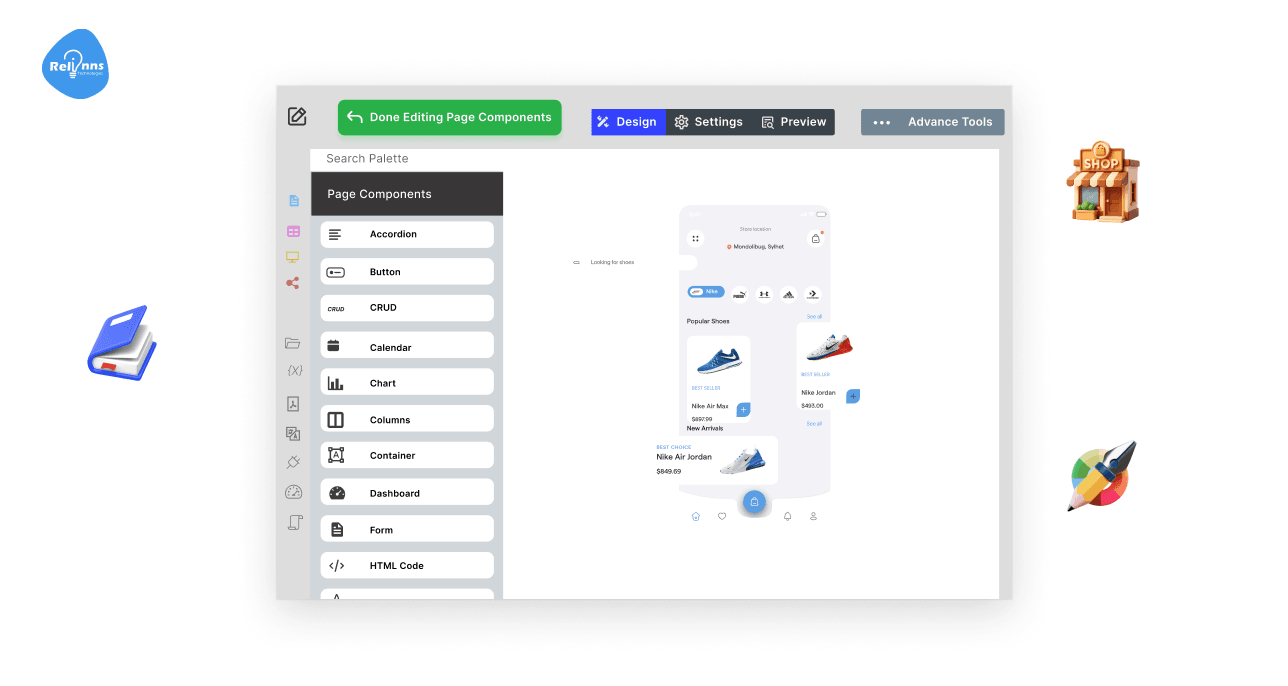
Examine how various industries are implementing low-code and no-code platforms to see the effects:
- Supply Chain Management: Relinns built a Joget-based supply chain management platform for a Swedish logistics company. The new system consolidated tracking, dispatch, and analytics with role-based dashboards, real-time GPS sync, and exception alerting. Results included 54% faster shipment processing and 95% on-time delivery accuracy.
- Education: Teachers don’t have to twiddle their thumbs waiting for IT anymore. They whip up their own apps-tracking homework, keeping tabs on students, even pinging parents when little Timmy “forgets” his math again. Honestly, it’s quite remarkable how much easier things become when you eliminate the middleman.
- Retail: Small business owners are finally ditching those clunky spreadsheets. No-code tools are a godsend for folks trying to wrangle inventory for their super niche shops. If your whole business is just vintage lava lamps (which, hey, respect), you can whip up a custom system that actually fits your bizarre needs. No more trying to cram your lava lamp empire into some generic spreadsheet. You can build a system for that. No sweat.
- Design and branding: As an example of how no-code principles transcend software into visual branding, Adobe Express digital business card printing solutions enable even non-designers to produce professional-quality business cards quickly.
- Startups: Before making significant investments in custom software, entrepreneurs rapidly prototype apps to test market concepts.
These aren’t theoretical use cases - they’re happening now, all over the world.
Difference between hype and reality?
So, here’s the deal: low-code and no-code platforms basically let you build apps without all that headache-inducing coding. Seriously, forget typing out endless lines of code-these things are more like playing with digital LEGO bricks.
You drag stuff around, hook up some boxes like you’re drawing a flowchart, click a few options, and boom, your app starts coming together. It’s like DIY for people who don’t speak “developer.”
Think low-code/no-code as on a spectrum, yeah? On one flank, you have hard-core coders—those geeks who eat, sleep, and breathe semicolons and would assemble an entire system by hand while you’re still working on your first cup of morning coffee.
Approach | Who It’s For | Pros | Cons | Example Use Case |
Traditional Coding | Professional developers | Maximum flexibility, fully custom solutions | Takes a lot of time and patience to get right | Building tailored software that supports an entire organization |
| Tech-savvy business users + developers | Faster development, customizable, scalable | Still requires some technical knowledge | Automating workflows, extending existing systems |
| Team leads and small business owners who just want something solved quickly | Quick to set up Simple to use Budget-friendly | Not ideal if you need full flexibility but great for simple apps | Prototyping, simple apps, dashboards |
Tips for Getting Started with Low-Code and No-Code
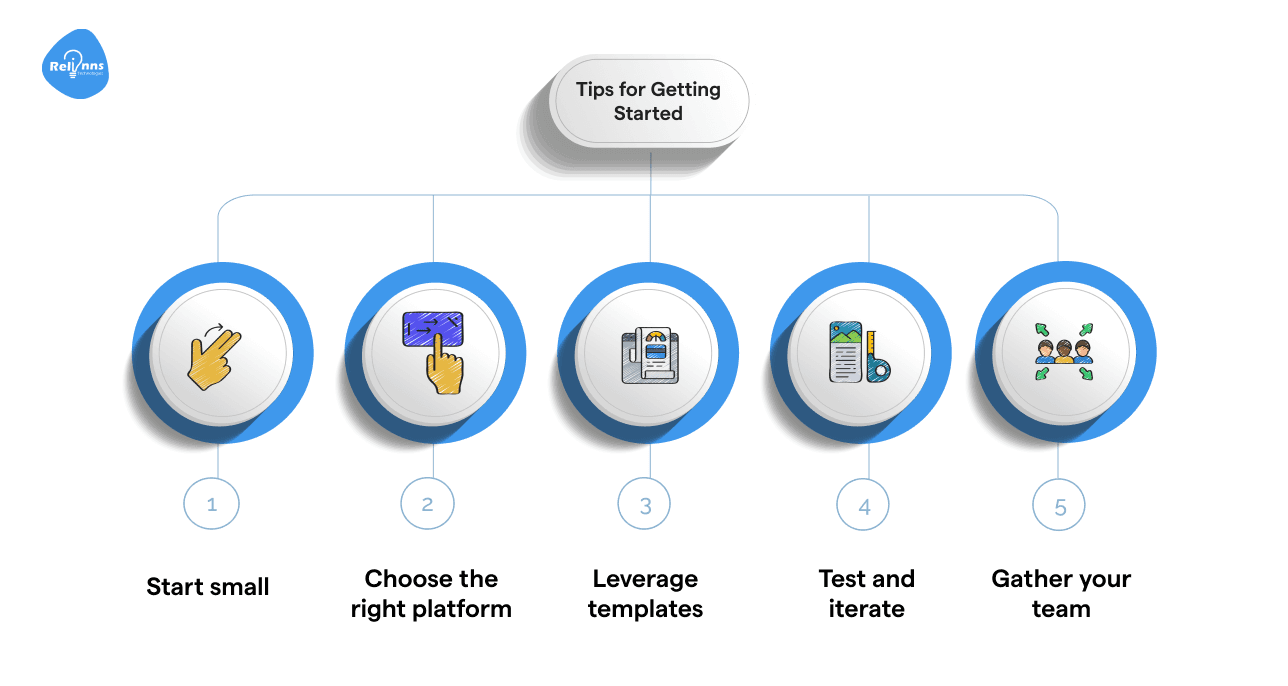
Here are some doable actions to take if you're interested in trying out these platforms:
- Start small. Start simple: tidy up a process you already use frequently, such as form submissions or scheduling.
- Choose the right platform. Want zero coding? Go with no-code tools such as Bubble or Glide. Okay with a bit of coding? Low-code tools like OutSystems or Mendix could be a better fit.
- Leverage templates. Pre-built templates are available on many platforms to help you get started more quickly.
- Test and iterate. Focus on progress, not perfection. Launch a small version, gather input, and adjust step by step.
- Gather your team. Promote teamwork. Cross-departmental input frequently results in the best apps.
Anyone can create simple and functional solutions with these steps.
How Low-Code and No-Code Empower Professionals
Perhaps the most fascinating aspect of this movement is its human side. It was long thought that only professionals could create software. These days, a marketing manager, small business owner, or teacher can design digital tools that are tailored to their needs.
This empowerment has consequences. It encourages uniqueness, problem-solving abilities, and an impression of mastery over one's own work. They begin to actively create technology rather than merely utilising it passively. That cultural shift could be just as revolutionary as the technology.
Suggested Reading: How to Build Progressive Web Apps in Joget
The Future of Low-Code and No-Code
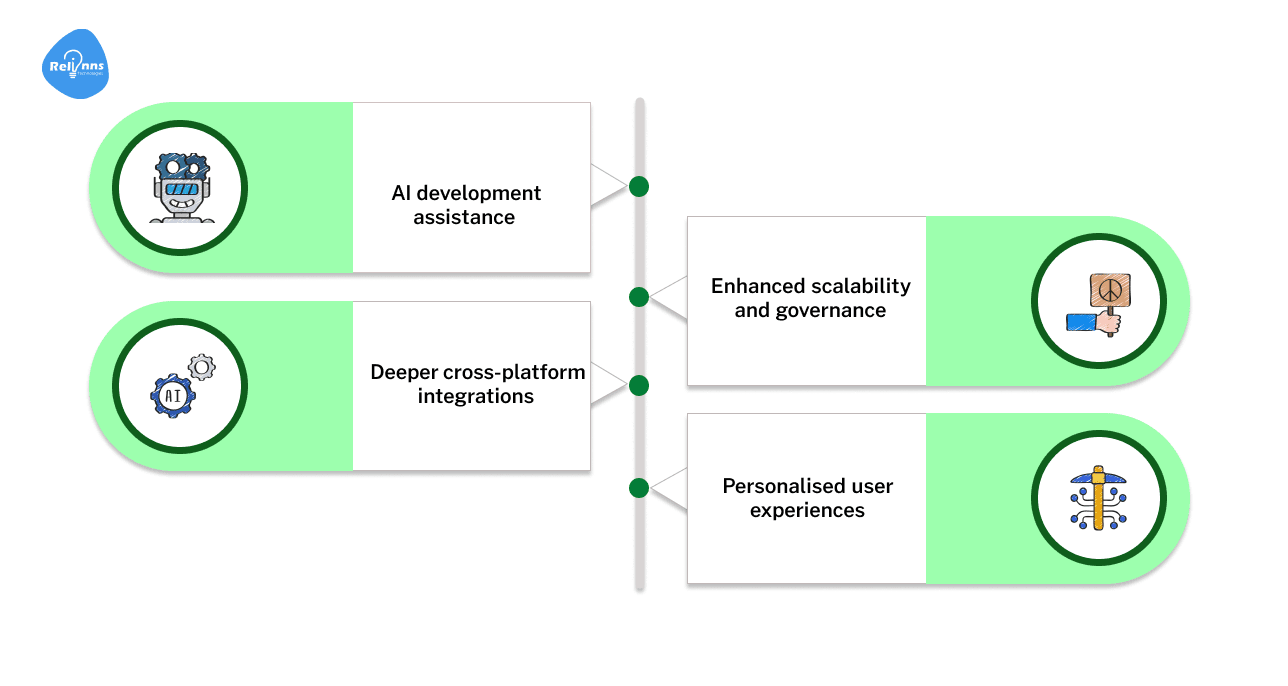
Experts anticipate that low-code and no-code will advance even further in the future. Already, artificial intelligence is being incorporated to automate processes or suggest code with little input. Apps can now easily connect across tools and industries thanks to platforms' growing integrations.
Key advancements in LCNC include:
- AI development assistance - Prior to this, it sped up the process, but now it helps in building by suggesting new features, laying down workflows, or maybe writing bits of code for you.
- Deeper cross-platform integrations - Applications that speak more smoothly to one another, so CRMs can gently converse with ERPs and all other tools that businesses rely on, minus the usual headaches.
- Enhanced scalability and governance - Platforms growing up to meet enterprise needs, with strong security, compliance checks now, and the ability to manage thousands of users without breaking a sweat.
- Personalised user experiences - LCNC tools adapting apps in real time using data insights, creating more customised solutions for end users.
Honestly, the way things are going, who even knows where the “pro dev” ends and the “citizen dev” begins? It’s all kind of a big mashup now. You’ve got hardcore coders wrangling the gnarly backend stuff, and then no-code folks just whipping up shiny front-end features like it’s nothing. The result? Projects get built faster, people toss around ideas like a hackathon on Red Bull, and the whole team is way more mixed up in a good way. Feels like the old school silos are kinda toast.
Closing Thoughts
Low-code and no-code are as much technological as they are. They increase accessibility and inclusivity in technology creation by reducing entry barriers.
These platforms enable the rapid development of ideas, allowing entrepreneurs, small business owners, and employees of large corporations to bring their concepts to life more quickly than ever before.
The best part? You don’t have to be a developer - just bring an idea, a problem worth fixing, and the curiosity to try. The tools will handle the heavy lifting.
At Relinns, we help businesses build powerful digital solutions through our low-code and no-code development services, including:
- Custom application development — Secure, scalable web and mobile apps tailored to your needs
- Rapid prototyping & MVP development — Quickly validate ideas with functional early-stage products
- Workflow & process automation — Streamline repetitive tasks with automated, no-code solutions
- System integration services — Connect multiple platforms into a unified, seamless ecosystem
- Legacy system modernisation — Upgrade outdated systems into a modern low-code architecture
- AI & ML tool integration — Embed intelligent features into your apps effortlessly.
Relinns empowers you to go from concept to launch faster—without the heavy coding burden.
Frequently Asked Questions (FAQ's)
What's the primary difference between a low-code platform and a no-code one?
It is known as a low-code because it needs a little bit of coding, which is a sort of catch-22 statement to say. It is basically for developers who want things done quicker but would still like to have some kind of control over it.
Can no-code platforms entirely replace developers?
Not really. They are helpful when building simple apps or testing ideas, but for serious projects, you still need developers. So think of no code as a shortcut, not a replacement.
Are low-code and no-code platforms secure for business use?
Most of them do have decent security in place. You want to be sure that you check how they treat your data and whether they can scale to what you need.
How far can net business continue to save with LCNC tools?
Considerable savings are there. According to Forrester, while the upfront costs come to just 40 per cent, the project is delivered faster, and fewer people are required to do the work.



